
People rally outside the UN conference on the human environment (UNCHE) in Stockholm in June 1972.
Photograph: Yutaka Nagata/UN Photo
The world’s longest serving environment correspondent explains the origins of a slow and continuing journey
Geoffrey Lean
Sat 28 May 2022
It all began with Högertrafikomläggningen, Swedish for “the right-hand traffic reorganisation”.
On 3 September 1967, Sweden switched from driving on the left to driving on the right. The change mainly took place at night, but in Stockholm and Malmö all traffic stopped for most of the weekend while intersections were reconfigured.
So sweet was the resulting city air that weekend that environmental enthusiasm went sky high. It was a moment that would change the world.
Three months later Sweden, citing air and other pollution, asked the UN to hold the first-ever international environmental conference, initiating a process that would lead to a groundbreaking gathering in its capital in 5 June 1972, the 50th anniversary of which will be marked next week. This was the beginning of a long and slow struggle to find and agree global solutions to these newly understood global environment problem. Twenty years later, the Rio conference would follow in the same month, kicking off UN climate summits, the most recent of which was held in Glasgow last autumn.
The world’s longest serving environment correspondent explains the origins of a slow and continuing journey
Geoffrey Lean
Sat 28 May 2022
It all began with Högertrafikomläggningen, Swedish for “the right-hand traffic reorganisation”.
On 3 September 1967, Sweden switched from driving on the left to driving on the right. The change mainly took place at night, but in Stockholm and Malmö all traffic stopped for most of the weekend while intersections were reconfigured.
So sweet was the resulting city air that weekend that environmental enthusiasm went sky high. It was a moment that would change the world.
Three months later Sweden, citing air and other pollution, asked the UN to hold the first-ever international environmental conference, initiating a process that would lead to a groundbreaking gathering in its capital in 5 June 1972, the 50th anniversary of which will be marked next week. This was the beginning of a long and slow struggle to find and agree global solutions to these newly understood global environment problem. Twenty years later, the Rio conference would follow in the same month, kicking off UN climate summits, the most recent of which was held in Glasgow last autumn.
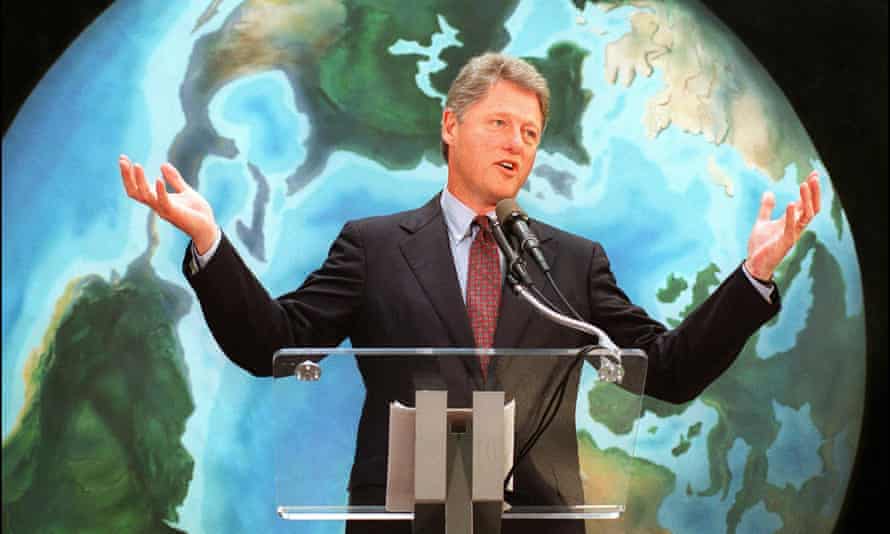
Bill Clinton, then a presidential candidate, speaks at press conference
on the Rio Earth summit in June 1992.
Photograph: Ben Rusnak/AFP/Getty Images
And yet critical mistakes were made at this early juncture. Progress, as we know, has been glacial in the years since. Now, looking back at the first steps on that journey, it’s hard not to see that, although in there were so many issues the conference got right, there were also some crucial issues it got wrong.
The Stockholm conference – held in the city’s Folkets Hus the site of both a former prison and a theatre specialising in farces – gave green issues international import. In the 1960s, environmental issues had seemed local, not global. In Britain, for example, the last of the great London smogs killed 750 people in 1962, while tragedy struck four years later in Aberfan, Wales, with the collapse of a colliery spoil tip. In Japan, people wore masks against air pollution. There was drought in the Sahel. And in 1969 a passing train ignited oil in Ohio’s Cuyahoga River, setting it ablaze.
But this was also a decade in which there were early stirrings of revolt against the environmental destruction. The World Wildlife Fund launched in 1961 with a special issue of the Daily Mirror carrying the front-page headline “DOOMED”. Rachel Carson’s book Silent Spring savaged pesticides the next year, and in 1969 an undergraduate Prince Charles first entered the fray, lobbying the then British prime minister, Harold Wilson, about Atlantic salmon at an event at the Finnish embassy.
And yet critical mistakes were made at this early juncture. Progress, as we know, has been glacial in the years since. Now, looking back at the first steps on that journey, it’s hard not to see that, although in there were so many issues the conference got right, there were also some crucial issues it got wrong.
The Stockholm conference – held in the city’s Folkets Hus the site of both a former prison and a theatre specialising in farces – gave green issues international import. In the 1960s, environmental issues had seemed local, not global. In Britain, for example, the last of the great London smogs killed 750 people in 1962, while tragedy struck four years later in Aberfan, Wales, with the collapse of a colliery spoil tip. In Japan, people wore masks against air pollution. There was drought in the Sahel. And in 1969 a passing train ignited oil in Ohio’s Cuyahoga River, setting it ablaze.
But this was also a decade in which there were early stirrings of revolt against the environmental destruction. The World Wildlife Fund launched in 1961 with a special issue of the Daily Mirror carrying the front-page headline “DOOMED”. Rachel Carson’s book Silent Spring savaged pesticides the next year, and in 1969 an undergraduate Prince Charles first entered the fray, lobbying the then British prime minister, Harold Wilson, about Atlantic salmon at an event at the Finnish embassy.
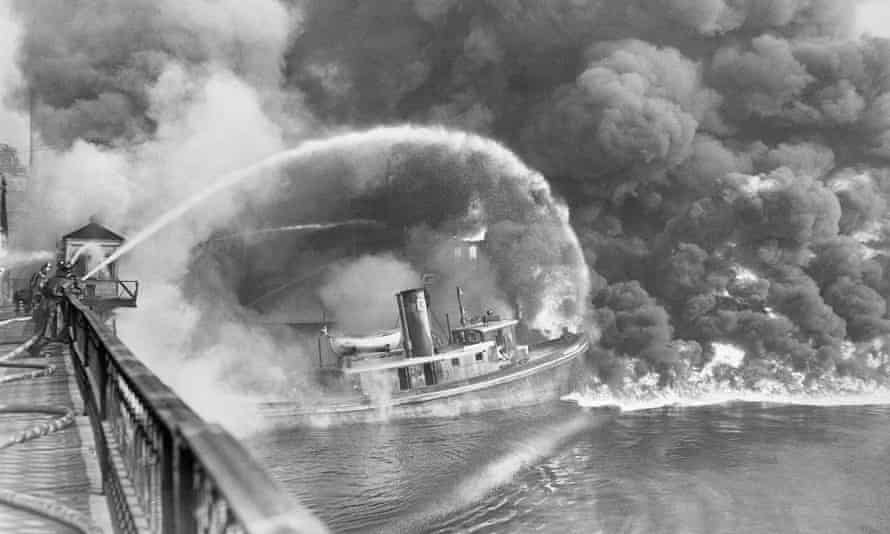
Firefighters tackle a burning oil spill on the Cuyahoga River in 1952.
Photograph: Bettmann/Bettmann Archive
But these were isolated voices, denounced and dismissed by the powerful. Carson said the US chemical industry wanted to return to “the dark ages” where “insects and vermin would once again inherit the Earth”. The then US agriculture secretary wrote to former US President Dwight Eisenhower, saying that since Carson was unmarried, despite being “attractive”, she was “probably a communist”.
The plan for an international conference in Stockholm initially had so little support that it was dismissively called “the Swedish matter” at the UN. It took two years of lobbying, against UK and French opposition, before the general assembly backed the proposal. As it happened, this (January 1970) was when I was told by a far-sighted editor at the Yorkshire Post that we needed to be covering this stuff and my long stint on the environment beat – the longest in the world as far as I am aware – began.
But these were isolated voices, denounced and dismissed by the powerful. Carson said the US chemical industry wanted to return to “the dark ages” where “insects and vermin would once again inherit the Earth”. The then US agriculture secretary wrote to former US President Dwight Eisenhower, saying that since Carson was unmarried, despite being “attractive”, she was “probably a communist”.
The plan for an international conference in Stockholm initially had so little support that it was dismissively called “the Swedish matter” at the UN. It took two years of lobbying, against UK and French opposition, before the general assembly backed the proposal. As it happened, this (January 1970) was when I was told by a far-sighted editor at the Yorkshire Post that we needed to be covering this stuff and my long stint on the environment beat – the longest in the world as far as I am aware – began.
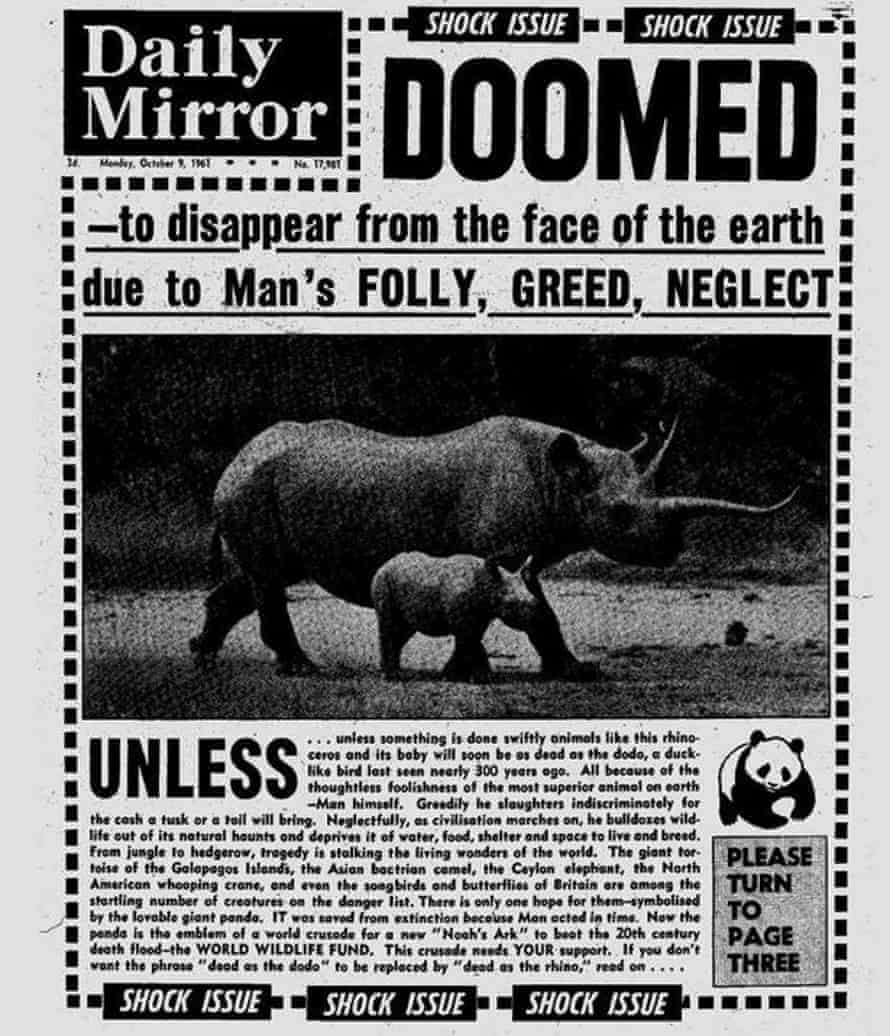
A special issue of the Daily Mirror in 1961 to cover the launch of the WWF Launch.
Photograph: mirror.co.uk/
Now the issue began taking off. The number of Americans concerned about air and water pollution doubled between 1965 and 1970, to 70%. That April, 20 million people demonstrated on the first Earth Day, leaving – to opponents’ delight – much litter behind them. Richard Nixon’s environment chief described Washington’s mood as “hysteria”, and the then US president devoted a quarter of that year’s State of the Union address to the issue. Over the next three years, he brought in 14 pieces of legislation laying the foundations of environmental US policy and institutions.
In Britain in 1970, Ted Heath came to power and established one of the world’s first environment ministries (originally he wanted to call it the Department for Life until he realised that would make his pushy minister Peter Walker “secretary of state for life”).
Developing world leaders were becoming worried, fearing wealthy countries would use environmental concern to deny them development. Those worries were not assuaged by the publication of two bestselling books: the Club of Rome’s Limits to Growth (the title says it) and A Blueprint for Survival by 30 top UK scientists, which called for deindustrialisation and extolled tribal societies. Alarmed, some considered boycotting Stockholm, with Brazil calling it “a rich man’s show”, and India and Nigeria also publicly expressing concern.
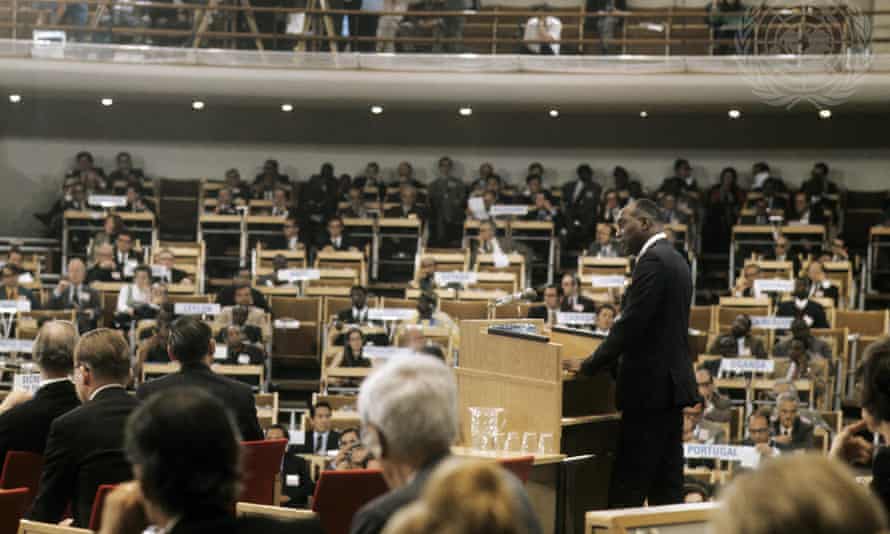
Now the issue began taking off. The number of Americans concerned about air and water pollution doubled between 1965 and 1970, to 70%. That April, 20 million people demonstrated on the first Earth Day, leaving – to opponents’ delight – much litter behind them. Richard Nixon’s environment chief described Washington’s mood as “hysteria”, and the then US president devoted a quarter of that year’s State of the Union address to the issue. Over the next three years, he brought in 14 pieces of legislation laying the foundations of environmental US policy and institutions.
In Britain in 1970, Ted Heath came to power and established one of the world’s first environment ministries (originally he wanted to call it the Department for Life until he realised that would make his pushy minister Peter Walker “secretary of state for life”).
Developing world leaders were becoming worried, fearing wealthy countries would use environmental concern to deny them development. Those worries were not assuaged by the publication of two bestselling books: the Club of Rome’s Limits to Growth (the title says it) and A Blueprint for Survival by 30 top UK scientists, which called for deindustrialisation and extolled tribal societies. Alarmed, some considered boycotting Stockholm, with Brazil calling it “a rich man’s show”, and India and Nigeria also publicly expressing concern.

Keith Johnson, of Jamaica, and general rapporteur of the conference UN conference on the human environment makes a statement.
Photograph: Yutaka Nagata/UN Photo
The books had another effect, erroneously concentrating attention on finite “non-renewable resources”, like minerals and fossil fuels, which were projected to run out. Limits to Growth had a particularly strong impact, because – back in those days when computers were thought to be omniscient – the book’s authors had run a series of models that showed supplies collapsing as economic growth continued, causing “rather sudden and uncontrollable decline” in industrial capacity.
Its fans were generally far less concerned about “renewable” resources like forests, fisheries and soils, as these would, by definition, replenish themselves. But, in practice, these were already being depleted so fast that they had no chance to recover, and their destruction has been at the heart of most of the big environmental crises of the past half century.
Meanwhile, the shortages of minerals never took place at anything like the feared scale – and we now know that we have more oil, gas and coal than we can burn without ruining the climate.
Such was the background against which the Stockholm conference got under way. In retrospect, far too little attention was paid to climate change – which was only beginning to arouse concern, despite having been identified as a potential crisis more than 100 years earlier – and to biodiversity. And, though the conference did come up with 109 recommendations, there would not be another big global summit on the environment for another 20 years.
The conference outcome was uncertain until the last minute. The final issue of its newspaper, Eco, said negotiators could only agree on one thing as the end neared: “Either a declaration will be finalised – or it will not.” After a non-stop 14-hour session, it was – together with a 109-point action plan.
A rush of international agreements followed – on marine pollution, endangered species, world heritage, acid rain, whaling, and much else, culminating in one of the most successful treaties of all time, saving the Earth’s vital ozone layer.
The books had another effect, erroneously concentrating attention on finite “non-renewable resources”, like minerals and fossil fuels, which were projected to run out. Limits to Growth had a particularly strong impact, because – back in those days when computers were thought to be omniscient – the book’s authors had run a series of models that showed supplies collapsing as economic growth continued, causing “rather sudden and uncontrollable decline” in industrial capacity.
Its fans were generally far less concerned about “renewable” resources like forests, fisheries and soils, as these would, by definition, replenish themselves. But, in practice, these were already being depleted so fast that they had no chance to recover, and their destruction has been at the heart of most of the big environmental crises of the past half century.
Meanwhile, the shortages of minerals never took place at anything like the feared scale – and we now know that we have more oil, gas and coal than we can burn without ruining the climate.
Such was the background against which the Stockholm conference got under way. In retrospect, far too little attention was paid to climate change – which was only beginning to arouse concern, despite having been identified as a potential crisis more than 100 years earlier – and to biodiversity. And, though the conference did come up with 109 recommendations, there would not be another big global summit on the environment for another 20 years.
The conference outcome was uncertain until the last minute. The final issue of its newspaper, Eco, said negotiators could only agree on one thing as the end neared: “Either a declaration will be finalised – or it will not.” After a non-stop 14-hour session, it was – together with a 109-point action plan.
A rush of international agreements followed – on marine pollution, endangered species, world heritage, acid rain, whaling, and much else, culminating in one of the most successful treaties of all time, saving the Earth’s vital ozone layer.
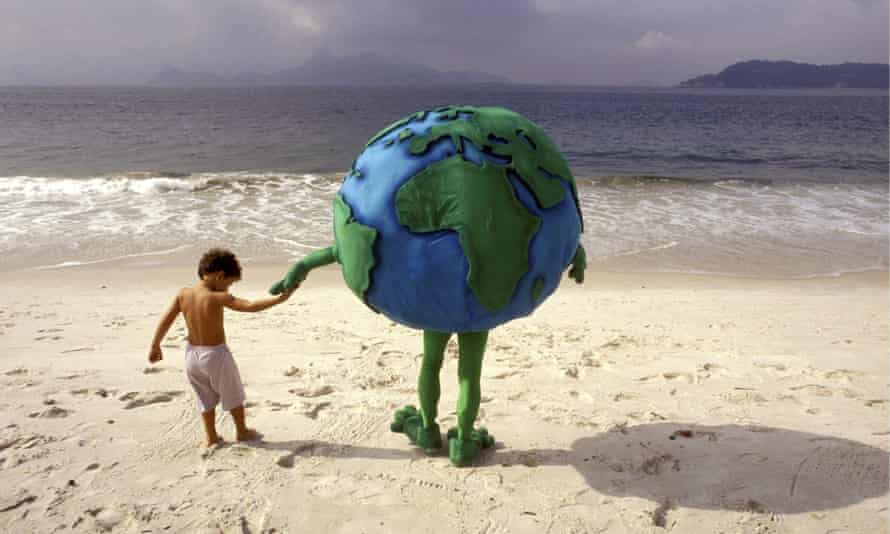
An image from the Earth summit in Rio de Janeiro.
Photograph: Antonio RIBEIRO/Gamma-Rapho/Getty Images
The concept of sustainable development had also emerged from the conference: equitable economic growth that preserved the environment for future generations. Nurtured by leading economists like Barbara Ward and boosted by the then Indian prime minister Indira Gandhi’s insistence that poverty was the worst form of pollution, it became one of the enduring legacies of the conference.
Another was pioneering the participation of pressure groups: 258 attended, from Greenpeace to the International Federation of Beekeepers. And they made a difference – effectively pushing through a call to ban whaling.
But momentum soon slowed. The 1973 oil crisis first seemed to reinforce environmentalism, stressing the precariousness of resources. But attention was diverted as an economic crisis, and then another price shock followed. Nixon – who had gone green out of political opportunism, not conviction – quickly dropped it (his infamous tapes recorded him likening environmentalists to “a bunch of damned animals”) as did other leaders. And the environment got pushed to the back of the shelf.
Now there is another moment. Last year’s Cop26 summit in Glasgow achieved more than was expected, with governments giving themselves this year – until another summit, in Egypt in November – in which to do more. So far, not much has happened, but potential exists, not least to cut emissions of methane and similar pollutants, a hitherto neglected measure that could cut the rate of warming in half.
The concept of sustainable development had also emerged from the conference: equitable economic growth that preserved the environment for future generations. Nurtured by leading economists like Barbara Ward and boosted by the then Indian prime minister Indira Gandhi’s insistence that poverty was the worst form of pollution, it became one of the enduring legacies of the conference.
Another was pioneering the participation of pressure groups: 258 attended, from Greenpeace to the International Federation of Beekeepers. And they made a difference – effectively pushing through a call to ban whaling.
But momentum soon slowed. The 1973 oil crisis first seemed to reinforce environmentalism, stressing the precariousness of resources. But attention was diverted as an economic crisis, and then another price shock followed. Nixon – who had gone green out of political opportunism, not conviction – quickly dropped it (his infamous tapes recorded him likening environmentalists to “a bunch of damned animals”) as did other leaders. And the environment got pushed to the back of the shelf.
Now there is another moment. Last year’s Cop26 summit in Glasgow achieved more than was expected, with governments giving themselves this year – until another summit, in Egypt in November – in which to do more. So far, not much has happened, but potential exists, not least to cut emissions of methane and similar pollutants, a hitherto neglected measure that could cut the rate of warming in half.

The Indian prime minister, Indira Gandhi, is greeted by her Swedish counterpart, Olof Palme, on the first day of the conference.
Photograph: SCANPIX SWEDEN/AFP/Getty Images
Also this year another summit will be asked to approve a 10-year strategy to protect nature and biodiversity.
And what of economics, once thought to conflict so much with environmentalism? It is increasingly recognised that they must be in concert, that the old models of extractive capitalism just do not work, that the only way to forward is to embrace a circular economy and go green. Just this week a study by Deloitte said reaching net zero carbon emissions would benefit the world economy by $43tn (£34tn) over the next half century.
It’s desperately late, long past time to stop driving, full tilt, down the wrong side of the road. Who’s for a global Högertrafikomläggningen?
Also this year another summit will be asked to approve a 10-year strategy to protect nature and biodiversity.
And what of economics, once thought to conflict so much with environmentalism? It is increasingly recognised that they must be in concert, that the old models of extractive capitalism just do not work, that the only way to forward is to embrace a circular economy and go green. Just this week a study by Deloitte said reaching net zero carbon emissions would benefit the world economy by $43tn (£34tn) over the next half century.
It’s desperately late, long past time to stop driving, full tilt, down the wrong side of the road. Who’s for a global Högertrafikomläggningen?
No comments:
Post a Comment